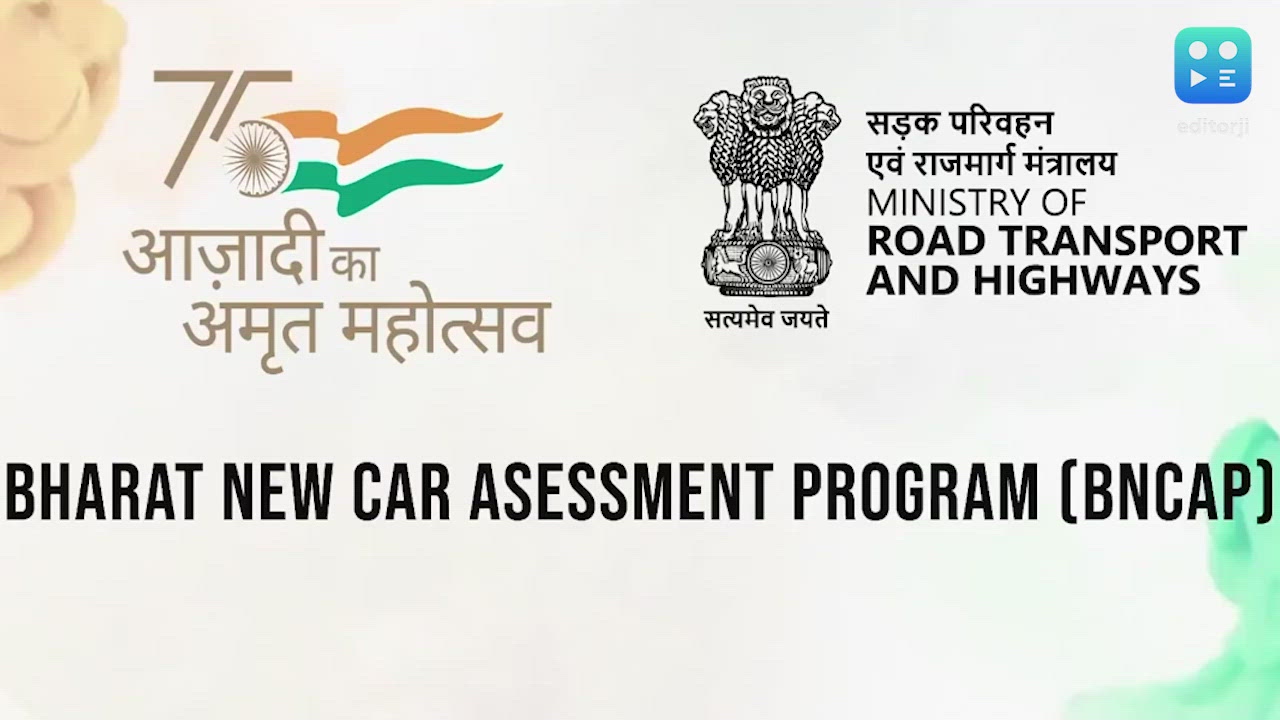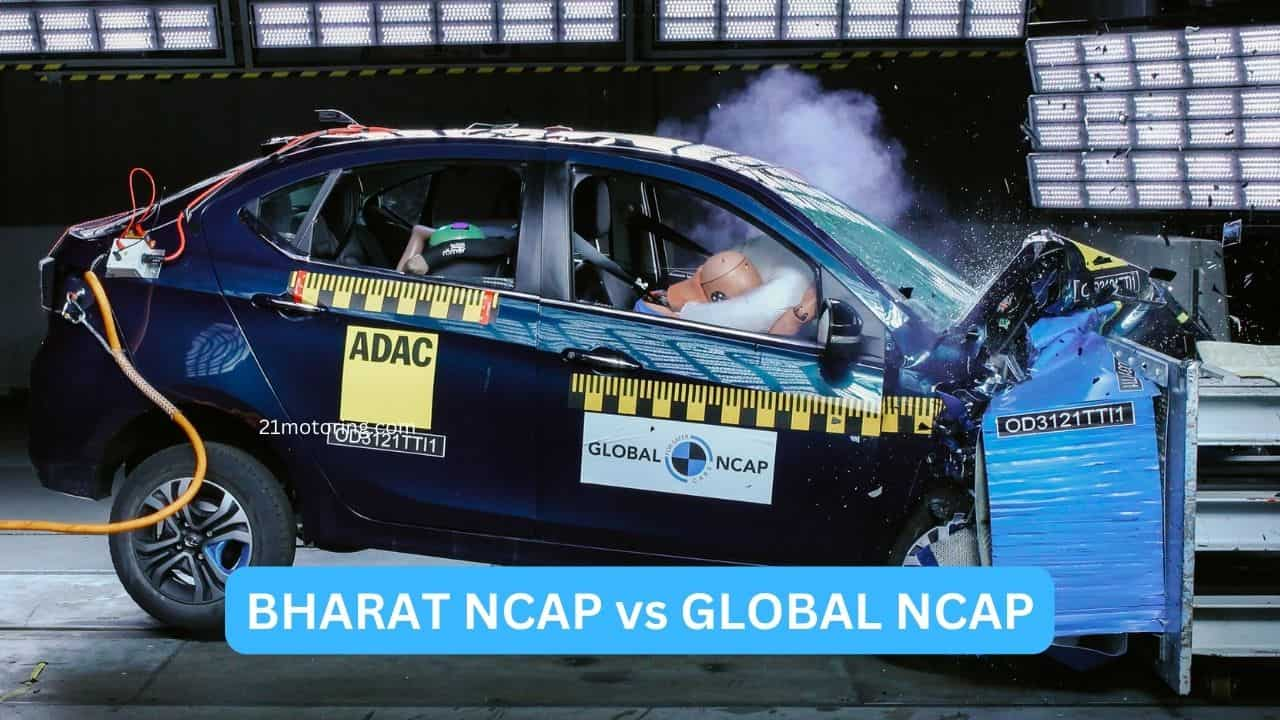Contents
Bharat NCAP vs Global NCAP Comparison
The Ministry of Road Transport and Highways (MoRTH) has introduced new Bharat NCAP regulations, slated for implementation on October 1, 2023. These guidelines align with the latest GNCAP protocols, sharing many testing procedures and standards. However, a significant difference distinguishes them.
Difference between Bharat NCAP vs Global NCAP

There’s a key difference between Bharat NCAP (BNCAP) and Global NCAP (GNCAP) in terms of Adult Occupant Protection (AOP) scoring. Under GNCAP, a vehicle can score a maximum of 34 points in AOP. BNCAP allows a maximum of 32 points. Both protocols allocate 16 points each for front and side impact tests. But GNCAP grants two extra points for seat belt reminders, whereas BNCAP doesn’t award any points for seat belt reminders. However, BNCAP mandates front seat belt reminders for a 3-star rating or higher, whereas GNCAP requires reminders for all seats. It’s noteworthy that MoRTH previously proposed rear seat belt reminders, but this has not been included in the current BNCAP standards.
Similarities between Bharat NCAP vs Global NCAP
1. Child occupant protection
Both Bharat NCAP (BNCAP) and Global NCAP have parallel scoring and evaluation procedures when it comes to child occupant protection. The assessment criteria are nearly identical, with both awarding 16 points for the frontal impact test, 8 points for the side impact test, 12 points for child restraint system (CRS) installation, and 13 points for vehicle-based assessments, including ISOFIX usability, integrated CRS, and the provision of three-point seatbelts, among others. This uniformity ensures that child occupant safety standards are consistently evaluated across both BNCAP and GNCAP.
2. Electronic Stability Control (ESC) Requirement
Both Bharat NCAP (BNCAP) and Global NCAP (GNCAP) align on the requirement for ESC in vehicle safety standards. Starting in 2024, for a vehicle to secure a 3-star safety rating or higher in both programs. There’s a two-step process involved in making ESC standard. It must be included as standard in the bestselling variant of the vehicle or in equal numbers across other variants. Furthermore, manufacturers must make ESC standard across all variants within two years of the test result publication. This synchronicity ensures that ESC becomes a crucial safety component in vehicles under both BNCAP and GNCAP, enhancing road safety across the board.
3. Side pole impact test
In both Bharat NCAP (BNCAP) and Global NCAP (GNCAP), the side pole impact test mandates the presence of head protection systems like side and curtain airbags. Without these systems, pole tests prohibit. Furthermore, both NCAPs have aligned requirements for achieving a 5-star safety rating: by the end of 2023, automakers must equip at least 50 percent of a vehicle’s variants with head protection systems, and this percentage must increase to 70 percent by the end of 2024, 90 percent by the end of 2025, and reach 100 percent by 2026. This synchrony ensures that vehicles incorporate essential head protection measures, thus enhancing safety standards for occupants during side pole impacts.
4. Pedestrian Protection
Both Bharat NCAP and Global NCAP have a shared emphasis on Pedestrian Protection. Bharat NCAP mandates that all vehicles adhere to the AIS100 norms, mirroring the requirement of UN127 norms set by Global NCAP. This convergence highlights their commitment to ensuring pedestrian safety standards are in place across vehicles tested under these protocols.

